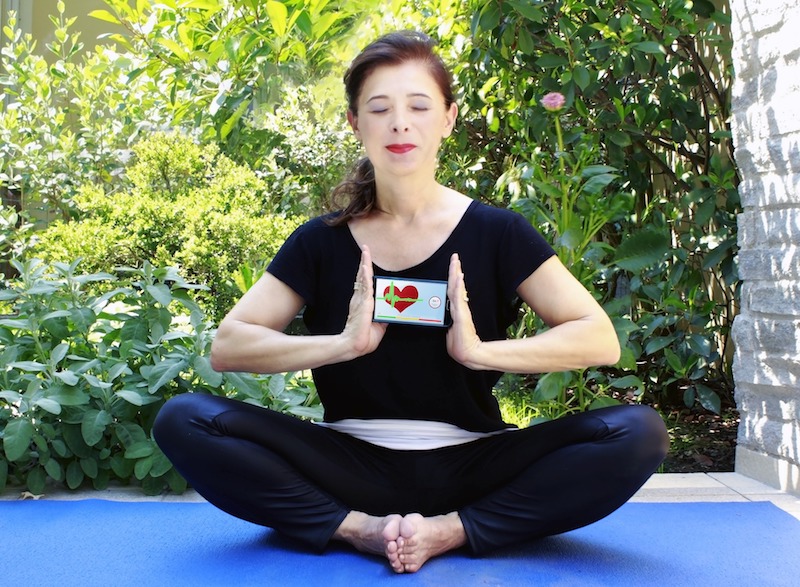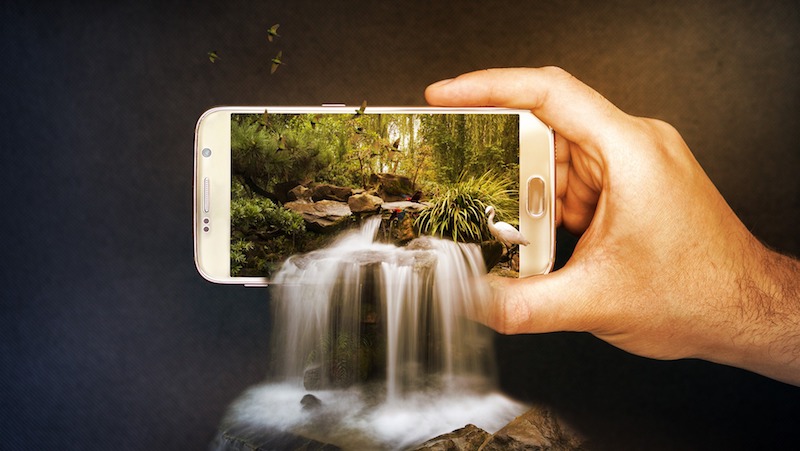For many people, their smartphone is more likely to be a source of distraction than a pathway to greater mindfulness. But like all technology, the smartphone is just a tool, one that can be used for good or evil.
In this case, “evil” is flitting from one app to another, while ignoring your family as they try to talk to you about their day, and feeling mentally worn out even though you blew off about two hours of steam by lining up on-screen jewels or tending to your virtual garden.
If you want to be more mindful, you could try ditching your smartphone, or at least doing a weekly digital detox. But why not put that powerful supercomputer to good use — and by that I mean the smartphone in the palm of your hand and the brain in the center of your skull.
Before you zip off to download a few mindfulness apps (if one is good for you, then several will be even better, right?), let’s take a look at whether you can actually learn mindfulness from a smartphone app.
Mindfulness, acceptance, and self-compassion
Jake Linardon, a psychology research fellow at Deakin University in Melbourne, Australia, recently reviewed 27 clinical trials that looked at whether people could learn mindfulness, acceptance, and self-compassion from a smartphone app. He also reanalyzed the combined data, in what’s known as a meta-analysis.
The results were published this month in the journal Behavior Therapy.
Mindfulness is paying attention to the present moment without judgment. This is usually done through practices such as meditation or noticing the breath or other body sensations.
Acceptance is closely related to mindfulness. It involves experiencing events fully, exactly as they are, and without defensiveness. Certain techniques promote acceptance by teaching people how to be more psychologically flexible and less likely to avoid certain situations.
Both of these can have a positive effect on your mental health.
“Being more mindful and accepting of certain experiences are said to enable people to let go of any habitual or harmful responses to these experiences and instead select healthier or more adaptive ways of responding,” wrote Deakin.
Mindfulness and acceptance offer a number of other benefits, including reductions in anxiety, body image dissatisfaction, and distress.
Self-compassion is also related to mindfulness, and is sometimes a byproduct of mindfulness training. It involves “developing a caring, accepting, and reassuring relationship” with yourself. It has been linked to greater well-being.
Like mindfulness, there’s an element of non-judgment in self-compassion. But self-compassion also involves connecting with others, developing kindness, and understanding that suffering is common to everyone’s experience.

Apps help people learn mindfulness
Traditionally, mindfulness, acceptance, and self-compassion were learned face-to-face, either in a group class or in a private session with a teacher.
But this type of mindfulness training is not accessible to everyone. Some people may not be able to afford to pay for regular mindfulness classes. Or there may not be a qualified teacher nearby. This can limit how many people learn mindfulness and related skills.
Smartphone apps offer a way to overcome some of the barriers to learning mindfulness. Most people have their smartphone nearby for much of the day, so a mindfulness “class” is potentially always within reach. Many apps are also free or only require a small one-time purchase.
But how well do mindfulness apps work?
Linardon’s analysis showed that people who used smartphone apps that included mindfulness and/or acceptance components were more likely to develop these skills. This change was similar to what is seen with computer-based mindfulness or acceptance programs.
However, the increase in mindfulness or acceptance was lower for people using the apps than for people who learned these skills from a trained therapist.
Still, Linardon wrote that mindfulness apps might be a “suitable alternative” for people who can’t or don’t want to do face-to-face training.
In Linardon’s study, people using the mindfulness apps also saw a boost to their self-compassion. This effect, though, was small. He wrote that an app that specifically focuses on developing self-compassion might give better results.
Some mindfulness apps seemed to produce bigger effects on mindfulness and acceptance, including apps that reminded people to do the mindfulness exercises. This suggests that regular mindfulness practice might have a bigger impact.
However, other research found that both daily and intermittent mindfulness practice offered benefits. This is important, because many people practice mindfulness this way, coming back to it as a “quick fix” rather than doing it daily.
Learning mindfulness is about finding what works
As a mindfulness and yoga teacher, I think it’s important to find what works for you. If you are tech-savvy, a mindfulness app may be something that you prefer over going to class. Other people, though, may enjoy face-to-face time with a teacher.
Signing up for a regular mindfulness meditation class can also help keep you accountable, something that can be challenging if you have to push yourself to open up the app on your smartphone.
As for how often you should practice mindfulness, I personally find regular practice easier to sustain over the long run.
If I only practice every couple weeks, it often feels like I am just starting out. My mind also seems to be more restless, with thoughts racing every which way.
But if I do a little bit of mindfulness practice every day, it starts to feel more like second nature … which means that I’m more likely to be mindful during the rest of my day.
This is the eventual goal of any mindfulness practice — keeping your attention on the present moment wherever you are and whatever you’re doing.


